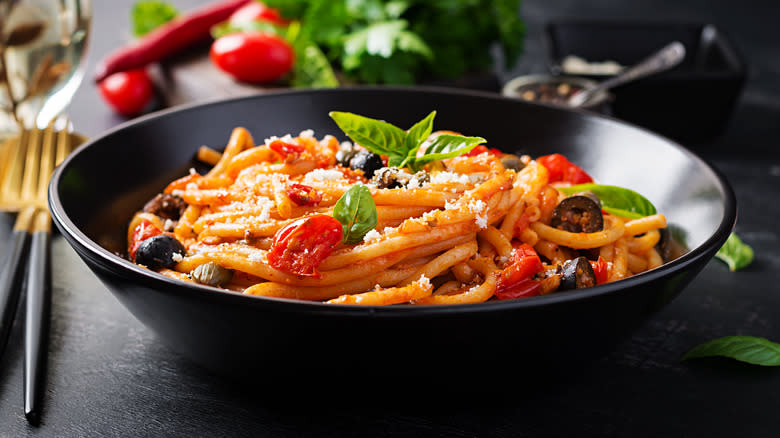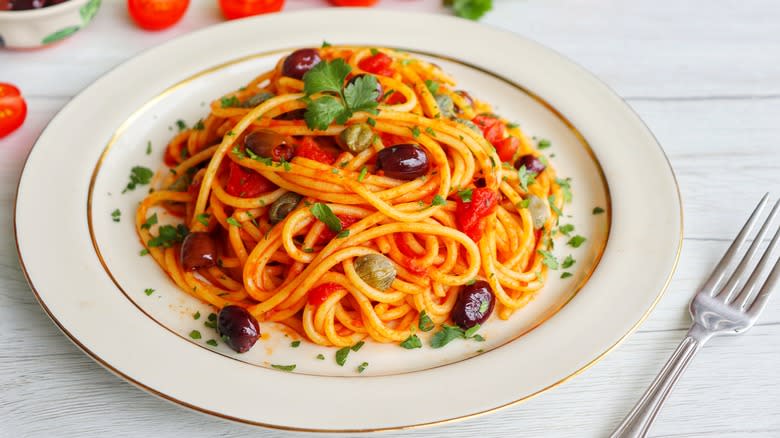The Italian Origins Of Puttanesca Pasta Sauce

Pasta puttanesca, aka pasta alla puttane, originated in Campania and is generally associated with the region's capital, Naples. There it also goes by the name of "aulive and chiapparielle," which refers to two of the ingredients (olives and capers). Sometimes it's simply been called pasta alla marinara, as well, since it's essentially a marinara sauce with extra stuff in it (including the aforementioned o and c). In Italy, pasta puttanesca, and pasta dishes in general, are typically served as primi piatti, or first courses that precede meaty entrees. Here in the U.S., however, we're often inclined to eat a larger portion and call it a complete meal. (We pause here for a brief commercial break to note that we have a puttanesca recipe that can be yours for the low, low price of $0.00.)
If you're wondering what's in puttanesca sauce but can't bear to click away to find out, we'll let you know right here: The base of the sauce is tomatoes, while flavorings include anchovies and crushed red pepper in addition to the aforementioned capers and olives. Should you be horrified by the thought of anchovies you may feel free to leave them out, however, as these salty little fishies weren't in the original Campanian version. Instead, they were added by neighbors to the north in the region around Rome. As for the type of noodles used, these are generally long and skinny like linguine or vermicelli, but it's also acceptable to go short and chunky with something like penne.
Read more: This Is How Spam Is Really Made
Yes, The Name Does Mean What You Think It Does (But The Reason Behind It May Not Match Up)

To deal with the elefante nella stanza right away, yes, "puttanesca" does come from the Italian word "puttana," which means sex worker. The dish itself seems to have evolved sometime around World War II, an era when many young women turned to the trade out of necessity. It's unlikely, however, that it was the type of thing these ladies would cook for themselves between shifts, much less something they would make for their clients.
If pasta puttanesca wasn't something created by or for sex workers, how, then, did it acquire its colorful moniker? One reason may be because the sauce is rather spicy, while another is that it is also fairly fragrant even though it need not always include garlic. Although it's unlikely that Italy's ladies of the evening were known for neglecting their hygiene — in fact, the opposite is more likely to be true as they'd hardly want to scare off the customers, the unfortunate etymology of the word "puttana" itself is that it derives from the Latin "putida," a word which does mean malodorous. Another, somewhat more benign, explanation involves a man named Sandro Petti who owned Ischia's 'O Rangio Fellone restaurant in the early '50s. As legend has it, late-night diners asked him to throw together "una puttanata qualsiasi," which literally translates to "just any wh*re" but idiomatically means "any old garbage."
Read the original article on Mashed.

